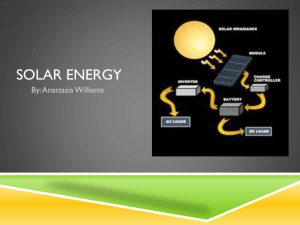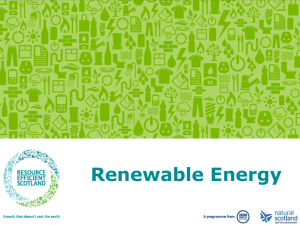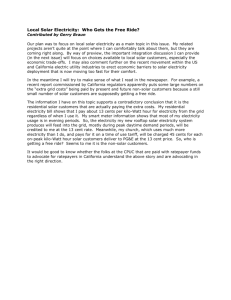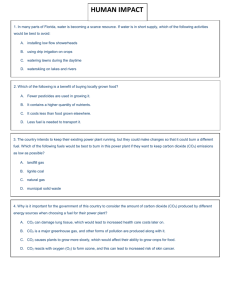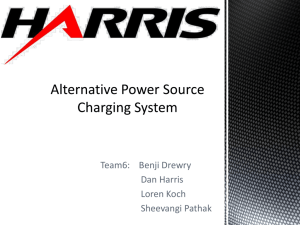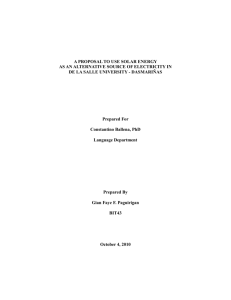View/Open
advertisement
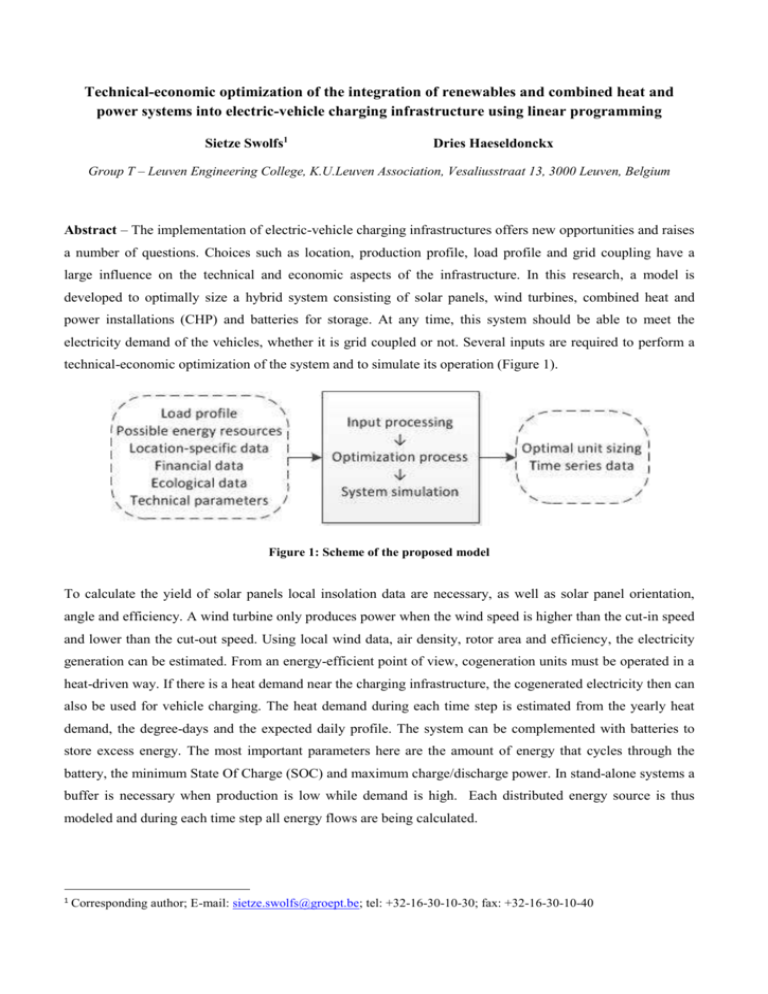
Technical-economic optimization of the integration of renewables and combined heat and power systems into electric-vehicle charging infrastructure using linear programming Sietze Swolfs1 Dries Haeseldonckx Group T – Leuven Engineering College, K.U.Leuven Association, Vesaliusstraat 13, 3000 Leuven, Belgium Abstract – The implementation of electric-vehicle charging infrastructures offers new opportunities and raises a number of questions. Choices such as location, production profile, load profile and grid coupling have a large influence on the technical and economic aspects of the infrastructure. In this research, a model is developed to optimally size a hybrid system consisting of solar panels, wind turbines, combined heat and power installations (CHP) and batteries for storage. At any time, this system should be able to meet the electricity demand of the vehicles, whether it is grid coupled or not. Several inputs are required to perform a technical-economic optimization of the system and to simulate its operation (Figure 1). Figure 1: Scheme of the proposed model To calculate the yield of solar panels local insolation data are necessary, as well as solar panel orientation, angle and efficiency. A wind turbine only produces power when the wind speed is higher than the cut-in speed and lower than the cut-out speed. Using local wind data, air density, rotor area and efficiency, the electricity generation can be estimated. From an energy-efficient point of view, cogeneration units must be operated in a heat-driven way. If there is a heat demand near the charging infrastructure, the cogenerated electricity then can also be used for vehicle charging. The heat demand during each time step is estimated from the yearly heat demand, the degree-days and the expected daily profile. The system can be complemented with batteries to store excess energy. The most important parameters here are the amount of energy that cycles through the battery, the minimum State Of Charge (SOC) and maximum charge/discharge power. In stand-alone systems a buffer is necessary when production is low while demand is high. Each distributed energy source is thus modeled and during each time step all energy flows are being calculated. 1 Corresponding author; E-mail: sietze.swolfs@groept.be; tel: +32-16-30-10-30; fax: +32-16-30-10-40 The sizing and optimization of a hybrid renewable energy system is a complex task. A common technique used in literature is an iterative procedure that simulates all possible configurations and then determines the most cost efficient one. In this research, a mathematical optimization method is used, namely linear programming. It is a powerful technique to solve complex problems and is being used in economics, production management engineering, etc. Here, the decision variables of the objective function are the amount of solar panels, wind turbine capacity, the size of the CHP unit and the storage capacity. As these variables are required to be integers, a mixed-integer approach is used. The objective function is the expression that has to be minimized, i.e. the net present cost of the project, the overall CO2 emissions or a combination of both. This objective function takes into account the investment cost, replacement cost and operation & maintenance cost of the different technologies. The optimization process is however subject to some constraints, such as the minimum state-of-charge of the batteries and the maximum available space for each renewable-energy technology. Based on the input, the model determines the coefficients of the objective function and the constraints, after which the optimization can begin. The output of the model are the optimal solar, wind, CHP and battery ratings, which can then be used to simulate the system in operation during one year. This allows the user to have an overview of the energy production, consumption and battery charging/discharging. Various sensitivity analyses are performed to investigate the effect of certain parameters on the output of the model, e.g. grid electricity price, investment costs, electricity demand, etc. It is concluded that an autonomous system requires a considerable amount of energy storage when only using solar panels, but this can be confined if the location allows to install a wind turbine or a combined heat and power unit. Wind, solar and cogenerated energy can work complementary to serve the energy need. Currently, these hybrid renewable energy systems cannot compete with the electricity price from the grid, mostly because of battery cost. However, reduction in emissions should also be taken into consideration, as well as the fact that it is expected that the electricity price will rise in the coming years. Also, storage can offer additional benefits in the future of smart grids (e.g. peak shaving).
